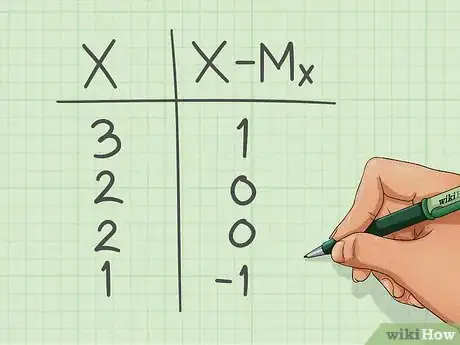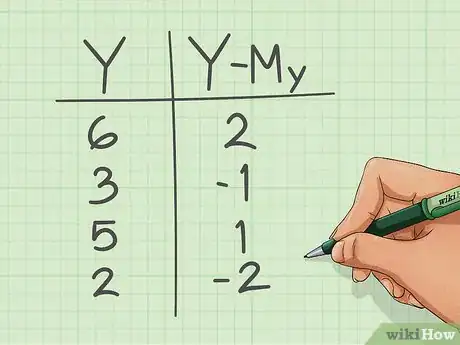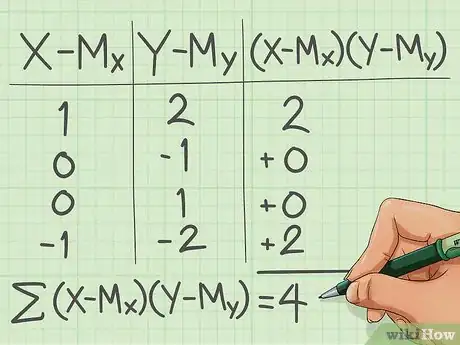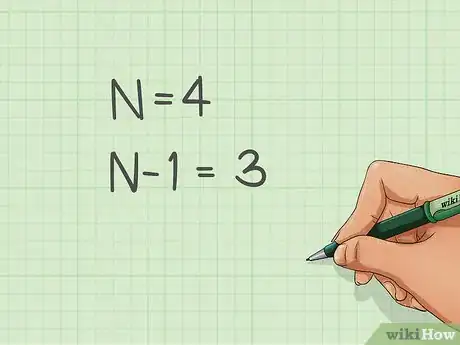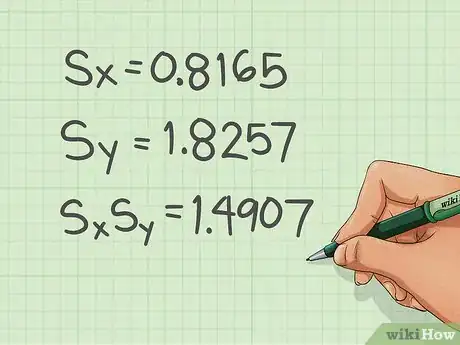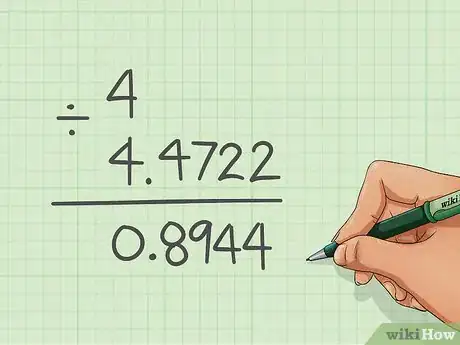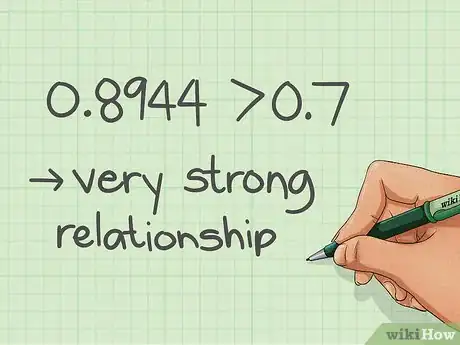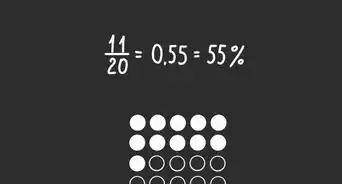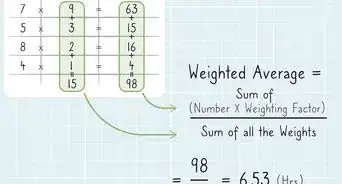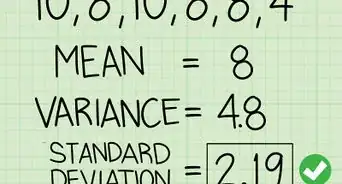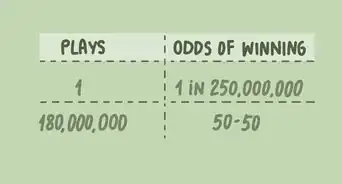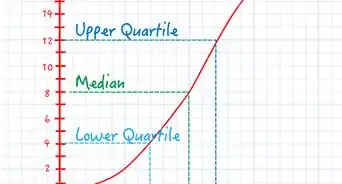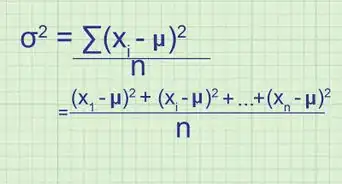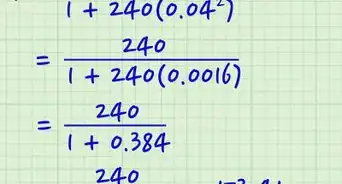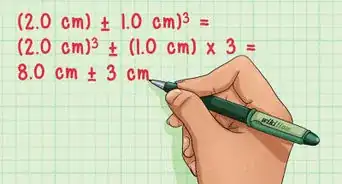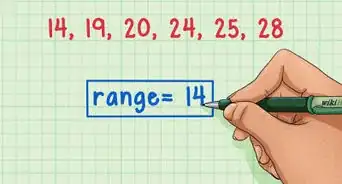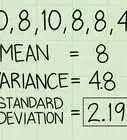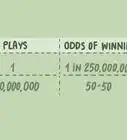wikiHow is a “wiki,” similar to Wikipedia, which means that many of our articles are co-written by multiple authors. To create this article, volunteer authors worked to edit and improve it over time.
This article has been viewed 50,064 times.
Learn more...
The Pearson Correlation Coefficient (which used to be called the Pearson Product-Moment Correlation Coefficient) was established by Karl Pearson in the early 1900s. It tells us how strongly things are related to each other, and what direction the relationship is in! The formula is: r = Σ(X-Mx)(Y-My) / (N-1)SxSy[1]
Want to simplify that? Let's say our hypothesis is that as consumption of chocolate increases, so does a person's self-reported happiness on a scale of 1 (unhappy) to 7 (happy). Everyone knows that eating chocolate makes you happier, right? Before we get started, identify your two variables (X and Y). Let's say we had information about how many pieces of chocolate a person eats per day (X) and what their level of happiness was (Y).
Steps
-
1Find the average of chocolate consumption (Mx) by adding up all of the people's scores and dividing by the number of people. Then we would subtract each individual score (X) from the mean. This tells us how far away this person is from the average. You should have a new score for each person.[2]
- In the formula that is: X-Mx
-
2Do the same for happiness. We find the average level of happiness (My); then subtract each individual score (Y) from the mean. Again, you'll have a score for each person.[3]
- In the formula that is: Y-My
Advertisement -
3Multiply each person's deviation from the mean for their X score by their deviation from the mean for their Y score. Once again, you'll have a new score for each person.[4]
- In the formula that is: (X-Mx)(Y-My)
-
4Add up all of the people's multiplied scores. That's what the funny-shaped "E" means in the formula. "Σ" is the Greek symbol for Sigma, and is used in stats to signify that you should add everything up.
- In the formula that is: Σ(X-Mx)(Y-My)
-
5Take the number of people in the sample (N) and subtract by 1.[5]
- In the formula that is: N-1
-
6Multiply the standard deviation of chocolate consumption (Sx) by the standard deviation of happiness (Sy).[6]
- If you're not sure how to calculate these values, check out How to Calculate Standard Deviation.
- In the formula that is: SxSy
-
7Multiply that number by the number of people in your sample minus one.[7]
- In the formula that is: (N-1)SxSy
-
8Take the number you calculated first [Σ(X-Mx)(Y-My)] and divide it by the number you just got [(N-1)SxSy].
-
9Interpret your result. r is the symbol used to denote the Pearson Correlation Coefficient).[8]
- A score of .1-.3 indicates a small relationship
- .31-.5 is a moderate relationship
- .51-.7 is a large relationship
- Anything above .7 is a very strong (sometimes called "isomorphic") relationship.
- A positive number means they move the same direction (as chocolate consumption goes up, so does a person’s happiness, and if chocolate consumption goes down, so does happiness). It doesn’t mean they both go UP—but it means they move together.
- A negative number means the variables move in opposite directions. That would mean that people were less happy as they ate chocolate, or people ate less chocolate when they were happy.
Warnings
- There are two assumptions when calculating a Pearson Correlation Coefficient. These are (a) that there are at least 2 variables and data are at minimum interval level, and (b) the data are normally distributed.⧼thumbs_response⧽
References
- ↑ http://methods.sagepub.com/reference/the-sage-encyclopedia-of-social-science-research-methods/n700.xml#tab1
- ↑ https://www.youtube.com/watch?v=2SCg8Kuh0tE
- ↑ https://www.youtube.com/watch?v=2SCg8Kuh0tE
- ↑ https://www.youtube.com/watch?v=lVOzlHx_15s
- ↑ https://towardsdatascience.com/pearson-coefficient-of-correlation-explained-369991d93404
- ↑ https://www.youtube.com/watch?v=lVOzlHx_15s
- ↑ https://towardsdatascience.com/pearson-coefficient-of-correlation-explained-369991d93404
- ↑ https://towardsdatascience.com/pearson-coefficient-of-correlation-explained-369991d93404
- Andy Field's "Discovering Statistics Using SPSS"
